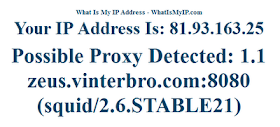Proxy servers can be used with any application that supports the use of proxies (e.g. web browsers). They can be used to bypass firewalls, free internet connection, cloak your IP, etc.
Before we configure the proxy server that you can use, we need to find a proxy server and its corresponding port. You can google for free proxies on the web but in this example we will be using 200.107.236.162 and port 80 as its port.
What we need to do is to place the port and the IP under HTTP Proxy under the Network Settings of your browser. Below are instructions for specific browsers that you have in your computer:
Mozilla Firefox: Tools > Options > Advanced > Settings > Manual proxy configuration.
Google Chrome: Options > Under the hood > Network > Change proxy settings > LAN settings > Use a proxy server > Advanced > HTTP.
Internet Explorer: Tools > Internet options > Connections > LAN settings > Use a proxy server > Advanced > HTTP.
Opera: Tools > Preferences > Advanced > Network.
Here is the screenshot of my Mozilla Firefox in my PC.
After putting the IP in your settings, click OK and check if your IP has changed by visiting whatismyip.com.
weee. ;)
Although there are some issues with the anonymity of proxy servers but at least we minimize some of the dangers while surfing the net.
Related Article:
About the Contributor:Shipcode is a prolific blogger of ROOTCON and at the same time an InfoSec enthusiast from Cebu. He was inspired to join ROOTCON as part of the core team to share his knowledge in information security. He encourages other like minded individuals to come forward and share their knowledge through blogging right here at ROOTCON Blog section. Email your contributions to info[at]rootcon[dot]org.
ROOTCON is managed by like minded InfoSec professionals across the Philippines. All rights reserved. Designated trademarks, brands and articles are the property of their respective owners.

